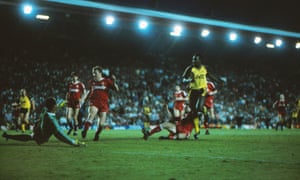
It seems fair to say sports documentary films reached something of an early artistic end-point with 1971’s Football As Never Before, a feature-length George Best portrait by the West German arthouse director Hellmuth Costard – best known for his 1968 work Especially Valuable, which featured a talking penis quoting passages of government legislation.
Presented without voiceover or soundtrack, Football As Never Before is an hour and 45 minutes of a single camera following its star around the pitch during a Manchester United game against Coventry City. Whatever its ultimate merits – and FANB does provide an absolute gold standard in mesmeric closeup shots focused, for long periods, entirely on George Best’s buttocks – the film also speaks to a more basic confusion over what exactly to do with sport on camera.
In outline it looks a simple enough relationship. Film-makers are always desperate for stories. Sport presents endless stories – a continual overblown operetta of glory, hubris and pantomime colour. The question has always been how to translate this self-contained world into a coherent whole, while also justifying a subject many viewers would perhaps consider a little beneath the threshold, a little limited, a little too much like, well, sport.
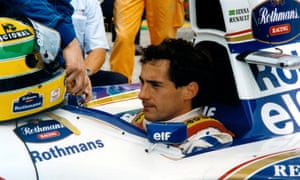
This might explain why, for so long, so few people bothered. The early history of sports documentaries takes in isolated sparks of arthouse brilliance, from FANB to gems such as A Sunday in Hell, a portrait of the Paris-Roubaix cycling race directed by the Danish poet Jørgen Leth.
Beyond this lies the other extreme, the epic official films made by Fifa and the IOC of successive postwar World Cup and Olympic Games, their extraordinary acts and oppositions offered up without apology or even much explanation. They’re as far from arthouse George Best as you’re likely to get, but present this world with an equally narrow eye.
The rise of Big Sport as a glossy mainstream entertainment product was always likely to drag sport stories out into the wider culture. Hoop Dreams was a breakthrough, a 1994 US film about junior basketball players that tells a gripping story of poverty, talent and anxiety. Around the same time, the UK was presented with the startling spectacle of An Impossible Job, the access-all-areas film about the sustained mental collapse and grim, kindly dignity of England manager Graham Taylor during the failed 1994 World Cup qualification campaign.Still, sport documentaries tended to know their place, concerned above all with broadening out, putting in context, explaining their own relevance. The ESPN 30 for 30 series provided a beautifully spun template of sporting documentary as wider social commentary. Feature films began to follow. Senna captured both its subject and its time. Zidane: A 21st-Century Portrait recycled Costard’s George Best treatment, albeit in more pompous and highfalutin fashion. One Night in Turin, a documentary on the 1990 World Cup, based around the wonderful Pete Davis book All Played Out, provided a fun, rollicking football-as-pop-culture template that has been energetically mined ever since.
Never more so than now. This month two new feature-length footballing documentaries have been released. 89 tells the story of Arsenal’s dramatic, last-ditch 1989 league title victory. Kenny is about former Liverpool player and manager Kenny Dalglish. Both are notable for two things. First, neither spends any time explaining itself or apologising for being there, and both are all the better for it. This is the third wave of sports docs, beyond arthouse, beyond social commentary; sports film qua sports film, free to come swaggering in through the front door with their own self-contained story to tell.
This leads on to the second thing about Kenny and 89: the two films are basically telling the same story, albeit from opposing points of view. Both are about that strange, febrile in-between time just before this world became modern, when professional football was still a frontier town of genuine extremes and un-homogenised glory, still not quite a product.
Both are, whether 89 needs to say it or not, about the decline of the industrial north. And both are pegged out around the same central event – the Hillsborough disaster in April 1989 that saw 96 people die during and after an FA Cup semi-final, the result of systemic institutional failings by those in charge. Both films are entwined around Hillsborough, even if 89 tells an entirely different story. Both are moving, moreish and slickly put together, all the more so when seen as a pair.
89 is the more niche, the story of a league title sealed by the narrowest possible margin with a last-minute Friday-night 2-0 victory at the home of all-conquering Liverpool. In 89 this is pitched as a kind of heist, a Dirty Dozen-type scenario, with Arsenal’s youthful, fun underdogs entering the citadel of one of the century’s great club teams to win their first title in 18 years.
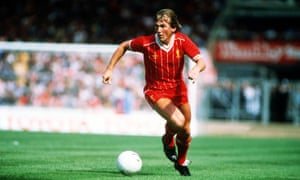
There is a natural chutzpah to all this: travelling up daringly late on the day of the game; the dramatic tactical switch to a back three; and above all, the emotional heart of the film, the wonderful bond between the club’s core of young players, current and future. David Rocastle was 22 when Arsenal produced their title snatch, a gloriously composed and charming athlete from south-east London. Rocastle was a mentor to the younger Ian Wright at that time, stopping him when they met on the Brockley estates and urging him to give up smoking weed and concentrate on his football talent. In the film Wright breaks down in tears remembering this. He signed for Arsenal two years later and went on to become the club’s record goalscorer. Rocastle died in 2001 and is much missed.
Otherwise 89 is the usual retro feast of period details, all enjoyably grainy screen-dissolves and cool clunky graphics. Look! A dork with a big mobile phone! Men on the trading floor in stripy jackets! Maggie Thatcher saying something! Old beige cars! Ride on Time! Pump Up the Jam! Etc!
The film has amazing access. Everyone talks, although at times there is a slight sense that watching old blokes bantering and playing cards could make way for a glimpse of something else, perhaps a sniff of the darkness most evident in the figure of the former alcoholic Tony Adams.
Adams is a star of the film, an extravagantly tailored, sightly eccentric figure these days, rolling his eyes and twirling his Victorian bow tie and reeling off a series of asides that might have led this film into other areas. The assorted club legends Adams and co replaced in the Arsenal back four were “pretty selfish individuals” he says. Wait. What? “We wanted success, and we’d do anything to get it, because it made us feel … better,” Adams concludes with a wicked, loopy grin, the grin of a man who knows a bit about trying to feel better. But we get no further with this.
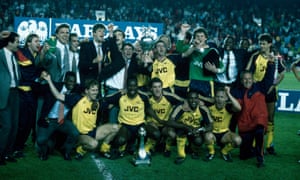
The other notable point in 89 is the absence of voices from the Liverpool side. I asked Amy Lawrence, one of the film’s producers, about this. She explained that an editorial decision was made to tell the story from one side only. The reason was Hillsborough, which happened just five weeks before that night at Anfield. The disaster is acknowledged and detailed in the film, which is dedicated to the Hillsborough dead. But in this company it would have completely taken over the narrative, turned the film into another film entirely. Instead 89 pays its respects and moves on, without ever quite losing the imprint of that potent absence.
And, for all the obvious Arsenal glory, the wider story here is the collapse of Liverpool, a period of trauma that signalled the falling away of one of the great club football dynasties. Liverpool stormed back and won the league by a mile the following year. But they haven’t won it since. The recovery period has been long and painful.
There’s a funny moment at the end as George Graham, Arsenal’s tough, likable Scottish manager, tries to calm everyone down in the moment of triumph, telling them to stop shouting and leaping about. “That was stupid, I don’t know what I was doing,” Graham laughs now. But maybe he did. For all the glory that night was also the passing of something.
t which point, enter Kenny, another beautifully framed football film that is told entirely from the other side. Kenny Dalglish was the Liverpool manager opposite Graham on the night 89 describes. He looked absolutely shot in that film: wrung out, drained, propped up by his own padded sports coat. Kenny tells us why.
Dalglish was first of all a wonderful footballer, one of the three greatest in England – along with Thierry Henry and Cristiano Ronaldo – in this observer’s lifetime. Career highlights aside, Kenny is a sombre film, if only because his has been a life with more than its share of grief and sorrow.
As a player Dalglish was at Heysel, the stadium disaster caused by rushing Liverpool fans that killed 29 Italians. He’d been present as a fan 14 years earlier at the Ibrox stadium disaster, which killed 66 people. And of course he was at Hillsborough. The final half hour of the film is where it shifts to another gear, telling the story of the remarkable part played by Dalglish and his wife, Marina, in helping to steer Liverpool through a tragedy inflicted, essentially, by the viciousness of the 1980s in many areas of public life.
Dalglish had this thrust upon him, becoming a face of the Hillsborough aftermath, called upon to provide wisdom and solace and a sense of institutional care when the state would not. His constancy in this role has been dad-like, laconic but unconditional.
Indeed, watching the Hillsborough footage we’re reminded that Dalglish’s son Paul was in the crowd; the manager’s anxiety was personal as well as public. Dalglish addresses the crowd over the tannoy at one point. Paul, lost in the mayhem, hears him and comes to the tunnel in some distress. ”And then he was there, just there,” Paul marvels, 28 years later, because dads are magical.
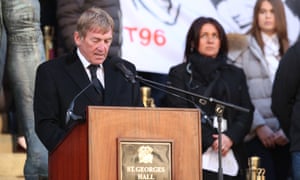
There is more of this kind of thing in the pipeline. Forthcoming sports docs include a film about Diego Maradona directed by Senna’s Asif Kapadia, and Netflix and Amazon series about Juventus and Manchester City, respectively. Perhaps, in time, the last few years might even come to be seen as a golden era for the straight-up sports doc, a cinematic age when so many of the best stories were harvested.
From a commercial angle it isn’t hard to see why so many are being made. For a start, sports documentaries are cheap. There is a formulaic ease to knocking together another ready-made plot, with ready-made footage and a ready-made audience. And let’s face it, many of these stories are only being told because of grey-pound nostalgia. In an age when Premier League grounds are packed out by middle-aged disposable income, sporting docs tend to tell the story of a certain time, of vanished youth.
On the other hand, maybe the nostalgia is justified. As 89 and Kenny demonstrate, football’s immediate pre-modern era was a time when grand, sweeping stories were still allowed to happen – before sport was commodified and processed, when the world still felt human-scale and recognisable, and where the eye is understandably still drawn.
Source:-theguardian
